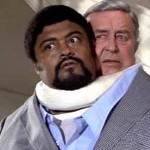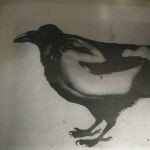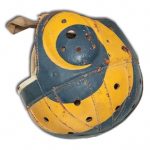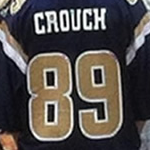Recent Forum Topics › Forums › The Rams Huddle › acl recovery time
- This topic has 25 replies, 11 voices, and was last updated 8 years, 11 months ago by
 zn.
zn.
-
AuthorPosts
-
May 3, 2015 at 7:03 pm #24651
 InvaderRamModerator
InvaderRamModerator6 months is the benchmark for returning from this injury. of course. this guy also says it takes up to a year for the knee to regain full strength.
How Long Will It Take My Anterior Cruciate Ligament Injury to Heal?
October 4, 2011
The importance of the ACL (anterior cruciate ligament) to knee stability can not be overstated. Next in line for importance is proper rehabilitation after an ACL injury and surgery.Let’s start with the basics.
The ACL is responsible for keeping your knee from sliding or twisting behind your hamstring. If the ACL is torn it pops and your knee begins to wobble. (See the seven simple tests to determine if you’ve torn your ACL.) The pain is excruciating.
Unfortunately, even though ACL injuries are common, women ages 14 to 30 are five times more than likely to suffer from an ACL injury. The reason why is not understood fully. It could be anatomy or estrogen levels or proper strength training.
An exact rehabilitation and recovery program from an ACL injury, especially if you’ve opted for reconstructive surgery, will vary from doctor to doctor and therapist to therapist
You can expect to be back at the sport in about six months. It’s best not to expect anytime sooner than that, unless you hit your benchmarks early.
Your first benchmark is to take care of the pain and swelling. Next it’s vitally important to protect the knee during the time it is healing from the surgery. Slowly a return in motion is something we also look for, then looking for a return in strength.
So it’s resolving the pain and swelling, protecting the knee to heal properly, return in motion and strength are what make up a good rehabilitation program. These are the benchmarks we look for in sports medicine.
Most of these steps we have control over. What we don’t have control over is the biology of the individual: will he heal fast or slow? Will the graft become a living part of the body again is not so much a concern as when that will happen. It differs from individual to individual.
What’s happening is the body is trying to re-establish blood flow to the graft that has been taken from another part of your body.
Six months is the benchmark where we can expect most athletes to be completely recovered and ready to play again. Some doctors will be aggressive with the rehabilitation and try and get the athlete back on the field in two or three months.
So much of that depends upon the athletes desire and how his or her body responds to the graft and the recovery program. The knee has to be strong enough and the full range of motion must have returned, as well as a dramatic reduction and even elimination of pain and swelling. If these benchmarks aren’t hit then the doctor and athlete need to be patient because the threat of re-injury is very real.
Of course six weeks after the surgery your knee may be healthy and strong enough, although not optimally at the strength target, that the risk of re-injury is not a worry and you could return to playing at that point.
I don’t fully recommend, however, doing this, but at the eight week the knee may be healed enough that I wouldn’t be worried about re-injury as much. Still, the longer the knee can be given to heal the stronger it will be and the less likely you will re-injure it.
In fact, your new knee ligament continues to heal for up to a year, meaning it won’t be as strong at nine months as it will be at twelve months. The longer you wait, the better.
But you can make a personal decision, along with the advice of your therapist, doctor and coach, of returning to the game in two months. You may not be up to your original performance standards pre-ACL surgery at this point, but in good enough shape to play.
Dr. Rick Lehman is a distinguished orthopedic surgeon in St. Louis, Missouri and an articular cartilage reconstruction pioneer He owns U. S. Sports Medicine in Kirkwood, MO, and LehmanHealth. Learn more about Dr. Rick.
May 3, 2015 at 7:03 pm #24331 znModerator
znModeratorJaguars Rookie DE Dante Fowler Injures Knee In Rookie Minicamp…Do Rams Need Gurley Ready for Week 1?
With Jacksonville’s first round rookie going down in camp today, should it remind the Rams to take it slow with their own?
Kim Klement-USA TODAY Sports
What is the timeline for Todd Gurley? He tore his ACL on Nov. 15 last year against Auburn, his first game back after the four-game suspension for be being paid for signing autographs. Doctors have suggested it was a “clean” tear that didn’t require any follow-up surgery or offer any complications in the repair of the ligament. The initial timeline was “six to nine months” which would of course put him in line to return to normal football operations between May 15 and August 15.
So when does he start to test the knee at full speed?
The Rams can’t even begin training camp until the last day of July, following OTAs throughout June. The Rams’ first preseason game is August 15. So there’s a broad window in there if the Rams and Gurley are interested in really pushing to hit that window.
But consider a couple factors:
1.) Todd Gurley is 20 years old. The Rams spent a 10th overall draft pick on him a week ago. They can’t contribute to risking any further injuries to that knee.
2.) Jeff Fisher hates playing rookies early. Aaron Donald didn’t even start until the fifth game. Tre Mason was inactive until week six and didn’t even start until week nine.
3.) Not trying to find another angle to squeeze this argument in, but I don’t think he improves the team all that much especially this early in his career having yet to adjust to the NFL game. The Rams can afford to go with Tre Mason, Benny Cunningham and whomever comes out of the preseason as a legitimate alternative beyond those two, if anyone, to get the season going.
Those three being considered, how long should the Rams sit him out of caution alone? Let’s say he’s comfortable with his knee and tell Fish he’s ready to go full speed when training camp starts. Should Fish let him? Should he hold him out of the preseason? Should he even hold him out of the first few games, again, for caution alone? Now consider those questions if Gurley’s NOT able to go for training camp. Do you have to consider placing him on the PUP and saying goodbye to the opportunity to play him until after the bye?
There’s never a right answer except for the one that gets your guy back as early as possible and avoids another injury. Here’s hoping the Rams land on that one.
May 3, 2015 at 7:03 pm #23898 znModerator
znModeratorNoncontact anterior cruciate ligament injuries: risk factors and prevention strategies.
J Am Acad Orthop Surg. 2000 May-Jun;8(3):141-50.
http://www.ncbi.nlm.nih.gov/pubmed/10874221
Abstract
An estimated 80,000 anterior cruciate ligament (ACL) tears occur annually in the United States. The highest incidence is in individuals 15 to 25 years old who participate in pivoting sports. With an estimated cost for these injuries of almost a billion dollars per year, the ability to identify risk factors and develop prevention strategies has widespread health and fiscal importance. Seventy percent of ACL injuries occur in noncontact situations. The risk factors for non-contact ACL injuries fall into four distinct categories: environmental, anatomic, hormonal, and biomechanical. Early data on existing neuromuscular training programs suggest that enhancing body control may decrease ACL injuries in women. Further investigation is needed prior to instituting prevention programs related to the other risk factors.
..
May 3, 2015 at 7:44 pm #23913 MackeyserModerator
MackeyserModeratorBad plant on the knee gets a lot of guys… no contact at all, just a bad plant, the knee goes too far and… snap.
Sports is the crucible of human virtue. The distillate remains are human vice.
May 9, 2015 at 9:07 am #24332 PA RamParticipant
PA RamParticipantIt truly sucks to be a Jags fan.
So there you have it–you never never know. Doesn’t matter who you take. You never know.
ACLs.
Ugh.
Science needs to make a bionic ACL and solve this problem.
"Reality is that which, when you stop believing in it, doesn't go away. " Philip K. Dick
May 9, 2015 at 9:09 am #24333 PA RamParticipant
PA RamParticipantAnd this:
Fowler has not yet signed his rookie contract. His deal is expected to be worth about $23 million, fully guaranteed, over four years (with a fifth-year team option).
Unsigned draft choices participating in minicamp sign an injury protection waiver. If there is an injury, the team will continue to negotiate in good faith as if the player were not injured.
A source confirmed to ESPN that Fowler had signed a waiver.
If I was a rookie I wouldn’t step on the field until I had my contract signed.
"Reality is that which, when you stop believing in it, doesn't go away. " Philip K. Dick
May 9, 2015 at 9:10 am #24334 nittany ramModerator
nittany ramModeratorIt truly sucks to be a Jags fan.
It would if there were any. 😉
May 9, 2015 at 10:31 am #24337 wvParticipant
wvParticipantYes, this ACL thing is causing all kinds of
fundamental-questioning all over the net.https://answers.yahoo.com/question/index?qid=20080502180807AAJb6gC
http://pigeonchess.com/2012/05/22/is-the-human-knee-joint-irreducibly-complex/
w
v

Ichthyostega; an early tetrapod and its hind leg bones. Its “knee” was the joint between the femur and the tibia and fibula.May 9, 2015 at 10:38 am #24338 znModerator
znModeratorYes, this ACL thing is causing all kinds of
fundamental-questioning all over the net.w
vLook for my latest article soon in the journal, Studies In Public Communication: From an Injured Jaguars Rookie to the Historical Complexities of Evolutionary Theory: A Day in the Life of the Huddle Board
May 10, 2015 at 10:02 am #24376 canadaramParticipant
canadaramParticipantI think that with the ACL injuries to Fowler and Heuerman it’s pretty obvious that teams should avoid drafting guys with healthy knees. The Rams got this one right.
May 10, 2015 at 10:37 am #24377 InvaderRamModeratorMay 10, 2015 at 11:43 am #24380
InvaderRamModeratorMay 10, 2015 at 11:43 am #24380 InvaderRamModerator
InvaderRamModeratorless invasive option to treat acl tears??? interesting article.
-
This reply was modified 9 years ago by
 InvaderRam.
InvaderRam.
-
This reply was modified 9 years ago by
 zn.
zn.
May 10, 2015 at 2:29 pm #24393 bnwBlocked
bnwBlockedI think that with the ACL injuries to Fowler and Heuerman it’s pretty obvious that teams should avoid drafting guys with healthy knees. The Rams got this one right.
Genius!
The upside to being a Rams fan is heartbreak.
Sprinkles are for winners.
May 10, 2015 at 3:09 pm #24394 InvaderRamModerator
InvaderRamModeratornon-surgical procedure using stem cells.
May 10, 2015 at 3:18 pm #24395 InvaderRamModerator
InvaderRamModeratorthe stem cell treatments are controversial. many experts think they have no use at all.
http://mmqb.si.com/2014/07/30/stem-cell-treatment-nfl-sports-medicine/
May 10, 2015 at 4:10 pm #24396 PancakeParticipant
PancakeParticipantNoncontact anterior cruciate ligament injuries: risk factors and prevention strategies.
J Am Acad Orthop Surg. 2000 May-Jun;8(3):141-50.
http://www.ncbi.nlm.nih.gov/pubmed/10874221
Abstract
An estimated 80,000 anterior cruciate ligament (ACL) tears occur annually in the United States. The highest incidence is in individuals 15 to 25 years old who participate in pivoting sports. With an estimated cost for these injuries of almost a billion dollars per year, the ability to identify risk factors and develop prevention strategies has widespread health and fiscal importance. Seventy percent of ACL injuries occur in noncontact situations. The risk factors for non-contact ACL injuries fall into four distinct categories: environmental, anatomic, hormonal, and biomechanical. Early data on existing neuromuscular training programs suggest that enhancing body control may decrease ACL injuries in women. Further investigation is needed prior to instituting prevention programs related to the other risk factors.
..
Doesn’t that cost seem way off at $12,500,000.000 per injury? Or just an example of how ridiculous the cost of healthcare is?
May 10, 2015 at 4:52 pm #24398 znModerator
znModeratorDoesn’t that cost seem way off at $12,500,000.000 per injury? Or just an example of how ridiculous the cost of healthcare is?
Dunno, but my guess is it’s the latter.
And welcome aboard old friend.
May 10, 2015 at 5:31 pm #24399 HerzogParticipant
HerzogParticipantAnyone know if grass fields help prevent these nasty ACL injuries?
May 10, 2015 at 5:51 pm #24400 znModerator
znModeratorAnyone know if grass fields help prevent these nasty ACL injuries?
NFL panel finds some knee, ankle injuries more common on turf
Associated Press
Updated: July 26, 2012 at 08:41 p.m.
NEW YORK — An NFL panel found that certain serious knee and ankle injuries happen more often in games played on the most popular brand of artificial turf than on grass.
The league’s Injury and Safety Panel is presenting its study Friday at the annual meeting of the American Academy of Orthopaedic Surgeons in New Orleans.
The report examined the 2002 through 2008 NFL seasons, comparing games played on grass to those on FieldTurf. It found that the rate of anterior cruciate ligament injuries was 88 percent higher in FieldTurf games — a conclusion that the manufacturer of the synthetic field hotly disputes.
Panel chairman Dr. Elliott Hershman, a New York Jets team orthopedist, said it’s too soon to make any recommendations on what surface teams should choose. More research is needed on issues such as whether players are wearing the right types of shoes on artificial turf.
“At this point, we want to stimulate more discussion,” Hershman said.
The panel has presented its findings to league owners, the NFL Players Association and companies that make artificial turf. The study has been submitted for publication.
“The paper is designed to stimulate further discussion, inquiry and improvements in playing surfaces,” league spokesman Greg Aiello said. “It does not draw any conclusions about the cause of the injuries analyzed. Our panel states in the report that additional analyses, data from future NFL seasons, and studies of injury rates on synthetic turf and natural grass surfaces, including for other athletic populations and levels of football, are needed before any conclusions can be drawn or recommendations made.”
Nine NFL stadiums currently have FieldTurf (Cincinnati, Detroit, Indianapolis, New England, Atlanta, Minnesota, St. Louis, Seattle and the new Meadowlands Stadium).
NFL teams began switching from the old carpet-style turf to the springier, more grass-like surface in 2000. By the end of the 2008 season, 14 stadiums used a brand of next-generation turf, while the rest had grass. Too few games were played on brands other than FieldTurf to include them in the study, Hershman said.
The panel started to notice a higher rate of injuries on the new turf in evaluating the data that the NFL compiles each season, Hershman said. Once enough games had been played on the newer surfaces to do a scientific analysis, the panel found that anterior cruciate ligament injuries and a more serious type of ankle sprain occurred at a higher rate that is statistically significant.
The rate for the ankle sprains was 32 percent higher on FieldTurf than on grass. Medial collateral ligament injuries and a less serious type of ankle sprain also happened more frequently, but the difference wasn’t statistically significant.
Hershman noted that the NFL research might not apply to lower levels of football or to other sports.
FieldTurf president Eric Daliere argues that the panel’s methods are faulty and cites research by Montana State professor Michael Meyers that has been published in The American Journal of Sports Medicine. Meyers’ work, though, has only looked at high school and college football, and not the NFL. FieldTurf paid for Meyers’ recent study that found lower overall injury rates for college games played on the surface.
“Michael Meyers has come to a very different conclusion on a different level and his is a real study, not just a report,” Daliere said. “He mentions poorly designed (analyses) — and this is the kind of work he does — and that the statistical analysis by the (NFL) panel was also flawed.
“I don’t put a lot of weight in it and think if is unfortunate it is coming out this way at this time.”
Meyers said in an e-mail to The Associated Press that he told the NFL in 2008 “there are too many glaring omissions and biases in the study to reach any valid conclusions.” He questioned why certain factors that could influence injury rates weren’t included and noted that some teams didn’t play any games on FieldTurf during some of the seasons studied.
Other university scientists and statisticians also expressed concerns, he said, and the panel withdrew its report after those meetings.
Hershman disputed that.
“Nobody withdrew anything,” he said. “We actually did some review of our data based on some of the thoughts they raised, and we validated our data. Because we did all that, we now feel our data is valid, relevant and statistically significant.”
FieldTurf promotes the safety benefits of its product on its Web site.
“As a company,” Daliere said, “the safety of the athletes really is in our DNA. It’s what FieldTurf focused on from the very beginning when we replaced traditional Astroturf with something dramatically safer.”
Daliere mentioned that Hershman’s team, the Jets, will have FieldTurf in its new stadium.
A close look at the panel’s data might not have much effect on NFL teams that know they can save money on maintenance in the long run by using FieldTurf rather than grass. The study estimated that if every stadium with grass were to switch to FieldTurf, that would result in only five additional ACL injuries per season across the NFL because of the infrequency of the injury.
The NFLPA’s biennial poll of its players last year showed that their four favorite fields were grass: Arizona, Tampa, San Diego and Carolina. Four of the next six were FieldTurf.
May 10, 2015 at 7:14 pm #24402 wvParticipant
wvParticipantDoesn’t that cost seem way off at $12,500,000.000 per injury? Or just an example of how ridiculous the cost of healthcare is?
Pancake, is that you?
w
vMay 10, 2015 at 11:41 pm #24408 MackeyserModerator
MackeyserModeratorOnly five additional ACL injuries per season…
I guess it depends which player. Pretty sure Sam Bradford was a really significant ACL injury.
JJ Watt goes down with an ACL, that’s huge… So just dismissing it as “only five” as if that were de facto insignificant is ignorant. If that extra is one of the top QBs, then it’s not just statistically significant, but just changed the entire league for that year.
I know the Field Turf guy had to stand up for his product, but c’mon…
Sports is the crucible of human virtue. The distillate remains are human vice.
May 13, 2015 at 6:49 pm #24527 znModerator
znModeratorSeventy percent of ACL injuries occur in noncontact situations.
from off the net
==
SunTzu_vs_Camus
Personally, I think of them as Forced and Un-forced ACLs…
Forced = The knee is impacted and the joint is driven/forced into tearing.
Unforced = The knee is not impacted however, a body control situation occurs that creates an odd angle of the joint – even if just a small step is taken – is enough force to tear the anterior cruciate ligament.
The UN-Forced ACLs are so bizzare and hard to explain how they happen. I tore my ACL&MCL playing football and it was UN-Forced..I was untouched and went to plant my foot and it just popped….and that was that, as they say.
It never happened again though the arthritis in the joint now 26yrs later is quite uncomfortable. winking smiley
May 16, 2015 at 11:15 am #24652 AgamemnonModerator
AgamemnonModeratorGurley underwent successful ACL surgery on Tuesday, Nov. 25.
http://bleacherreport.com/articles/2269003-todd-gurley-injury-updates-on-georgia-rbs-knee-and-return
—————————————————-
Friday, May 1
Ian Rapoport of NFL.com reported that Gurley’s timeline has him ready for Week 2 of training camp and that he’s a candidate to begin camp on the physically unable to perform list.
On April 26, Gurley took to Instagram to update fans on the status of his knee as he continues to recover from surgery:
I am guessing Oct. 25, a home game against the Browns.
-
This reply was modified 9 years ago by
 Agamemnon.
Agamemnon.
May 18, 2015 at 10:07 am #24734 znModerator
znModeratorACL Tear Won’t Keep Most College Athletes From Returning to Play: Study
Recovery actually seems better for college-age players vs. younger peers, researchers sayACL Tear Won’t Keep Most College Athletes From Returning to Play: Study
FRIDAY, Sept. 26, 2014 (HealthDay News) — It’s a debilitating injury, but an ACL tear typically doesn’t mean the end of a college athlete’s career, a new study finds.The research suggests that the risk for a reinjury of the knee’s anterior cruciate ligament (ACL) actually goes down as athletes mature from high school into their college years.
Researchers at the University of North Carolina report that most of the college players in the study returned to their sport after surgery to repair an ACL tear.
However, college athletes who had suffered an ACL injury in their pre-college years were much more likely to suffer recurrent ACL trouble, compared to those who had their first such injury in college.
The study included 89 male and female UNC athletes who’d undergone an ACL surgery, either prior to entering college or while they were collegiate athletes. Fifty-four of the patients had surgery during college, while 39 had the surgery before college.
Both groups had nearly identical return-to-play rates — the pre-college group used 78 percent of their total playing eligibility after injury, while the college group used 77 percent.
However, there were significant differences in their rates for ACL reinjury and reoperation.
The pre-college group had about a 17 percent injury rate with their original ACL surgery, and they also had a 20 percent chance of suffering an ACL injury in the other knee, the study found.
In comparison, the rate for the college athletes was about 2 percent and 11 percent, respectively.
The reoperation rate was about 51 percent for the pre-college group and 20 percent for the college group, according to the study published Sept. 24 in the American Journal of Sports Medicine.
“It’s very clear from our data that the younger the elite athlete, the higher risk for reinjury,” lead author Dr. Ganesh Kamath, assistant professor of orthopedics at UNC’s School of Medicine, said in a university news release.
“It’s clear that these kids are going to get back to playing sports at a higher level, but there is something in their makeup that puts them at high risk for tearing the ACL in the same or the other knee again. Once the athlete, though, gets past adolescence, this risk seems to go way down,” Kamath said.
May 29, 2015 at 5:48 pm #25485 znModerator
znModeratorBumped cause it became relevant
May 31, 2015 at 11:16 pm #25634 znModerator
znModerator2 good ACL threads.
Here’s the other: http://theramshuddle.com/topic/whats-the-deal-with-acls/
Maybe I will do a “synopsis” highlights post kinda summarizing it all.
…
-
This reply was modified 9 years ago by
-
AuthorPosts
- You must be logged in to reply to this topic.


